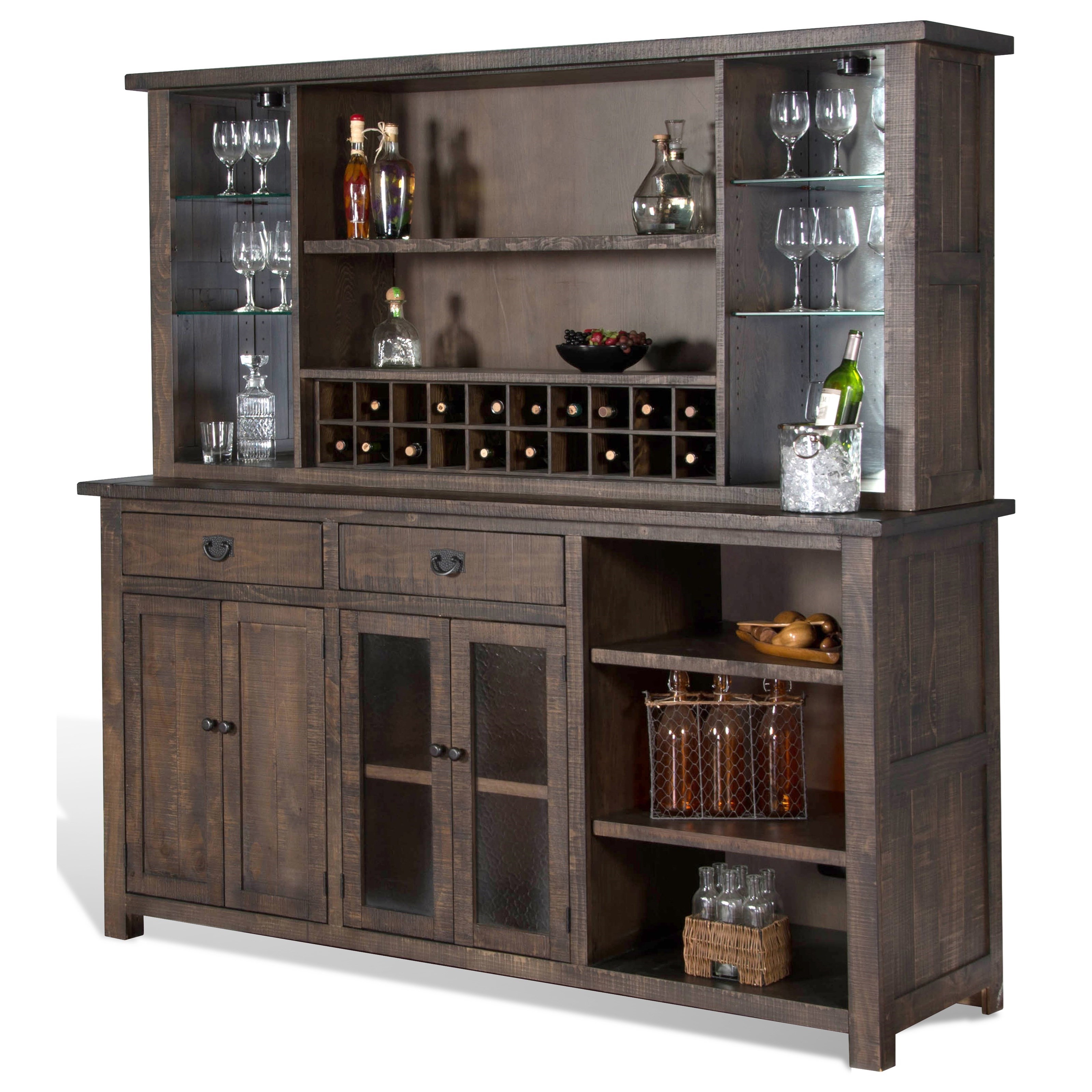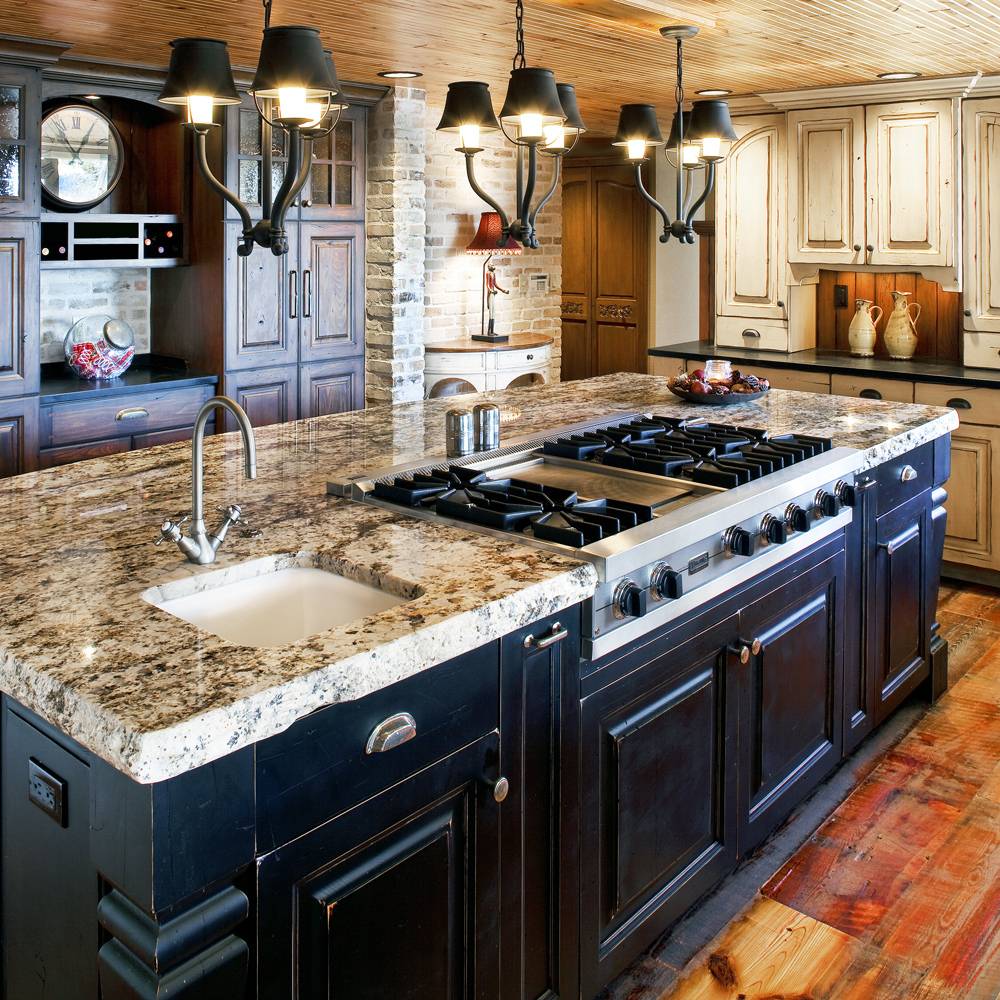Homestead Cabinet and Furniture Styles

Homestead furniture styles evoke a sense of rustic charm and enduring practicality, reflecting the values of self-sufficiency and connection to nature that are central to the homesteading lifestyle. These styles often feature simple, functional designs with a focus on durability and natural materials, creating a warm and inviting atmosphere in the home.
Shaker Style
Shaker furniture is characterized by its minimalist aesthetic, emphasizing clean lines, simple forms, and functionality. Originating in the 18th century with the Shaker religious sect, this style emphasizes simplicity, utility, and craftsmanship. Shaker furniture often features dovetail joints, hand-planed surfaces, and a lack of ornamentation. Iconic pieces include the Shaker rocking chair, the Shaker ladder-back chair, and the Shaker table.
Farmhouse Style
Farmhouse furniture is characterized by its rustic charm and country appeal. This style often incorporates distressed finishes, reclaimed wood, and farmhouse-inspired accents such as galvanized metal and vintage hardware. Farmhouse furniture is typically sturdy and durable, designed to withstand the demands of a busy farm life. Popular farmhouse furniture pieces include farmhouse tables, farmhouse benches, and farmhouse cabinets.
Country Style
Country furniture embraces a cozy and comfortable aesthetic, often featuring floral patterns, gingham fabrics, and distressed finishes. This style is characterized by its warmth and inviting atmosphere, drawing inspiration from traditional country homes and rural settings. Country furniture pieces often include floral-patterned upholstery, wooden chairs with carved details, and antique-inspired chests and dressers.
Functionality and Design Considerations: Homestead Cabinets And Furniture

Homestead cabinets and furniture are not just about aesthetics; they are designed to serve a purpose in the daily lives of those who use them. This section delves into the key functional considerations and design principles that make homestead furniture both practical and visually appealing.
Storage Capacity and Durability
Homestead furniture is often designed with ample storage in mind. This is crucial for maximizing space in a home, particularly in rural settings where space is often at a premium. Durable materials are essential for long-lasting furniture that can withstand the rigors of daily use.
Homestead furniture should be built to last, not just for a few years, but for generations.
- Cabinets: Homestead cabinets are often larger and deeper than their urban counterparts, offering generous storage for household items, tools, and provisions. They are often constructed from sturdy hardwoods like oak, maple, or cherry, known for their durability and resistance to wear and tear.
- Tables: Tables designed for homestead use are typically made from sturdy materials like solid wood or metal, and often feature robust construction techniques to ensure they can handle heavy loads and withstand years of use.
- Chairs: Homestead chairs are often built with comfort and durability in mind, featuring sturdy frames and comfortable seating surfaces. They may be constructed from wood, metal, or a combination of both.
Ease of Maintenance
Homestead furniture is designed to be easy to clean and maintain, as life on a homestead can be messy. This is often achieved through the use of durable materials and finishes that are resistant to stains and scratches.
- Finishes: Homestead furniture often features durable finishes like oil-based paints, varnishes, or waxes, which are resistant to scratches, stains, and moisture.
- Materials: The choice of materials can also impact ease of maintenance. For example, furniture made from natural wood is often easier to clean and repair than furniture made from other materials like fabric or metal.
Design Principles
Homestead furniture design often reflects the values of simplicity, functionality, and craftsmanship. These principles are reflected in the use of natural materials, clean lines, and sturdy construction techniques.
Homestead furniture is often designed to be both beautiful and functional, reflecting the values of the homestead lifestyle.
- Simplicity: Homestead furniture often features simple, clean lines and avoids unnecessary ornamentation. This minimalist approach emphasizes the functionality of the piece and creates a sense of calm and order in the home.
- Craftsmanship: Homestead furniture is often handcrafted by skilled artisans, using traditional techniques and materials. This attention to detail ensures the furniture is both durable and beautiful.
- Natural Materials: Homestead furniture often incorporates natural materials like wood, stone, and leather. These materials are not only durable but also contribute to a warm and inviting atmosphere in the home.
Integration into Living Spaces
Homestead cabinets and furniture can seamlessly blend into various living spaces, enhancing both functionality and aesthetics.
- Kitchens: Homestead cabinets are often used in kitchens to provide ample storage for cookware, dishes, and pantry items. Their sturdy construction and durable finishes make them ideal for withstanding the wear and tear of everyday use.
- Dining Rooms: Homestead tables and chairs are often used in dining rooms, providing a gathering place for family and friends. The durability of these pieces ensures they can handle years of use and countless meals.
- Bedrooms: Homestead furniture can also be found in bedrooms, providing storage for clothing and other personal belongings. The simple design and natural materials create a calming and inviting atmosphere for sleep and relaxation.
- Living Rooms: Homestead furniture can also add a touch of rustic charm to living rooms. A sturdy coffee table or a comfortable armchair can create a welcoming space for relaxation and conversation.
Materials and Construction Techniques

Homestead cabinets and furniture are renowned for their durability, craftsmanship, and timeless appeal. These qualities are a direct result of the materials and construction techniques employed in their creation. This section delves into the heart of homestead furniture making, exploring the materials and traditional methods that contribute to its enduring character.
Wood Selection and Preparation, Homestead cabinets and furniture
The choice of wood is paramount in homestead furniture making, as it dictates the piece’s strength, appearance, and longevity. Common wood species used include:
- Oak: Known for its durability, strength, and distinctive grain pattern, oak is often used for tabletops, cabinets, and furniture frames.
- Maple: Maple is prized for its hardness, smooth grain, and beautiful color, making it suitable for furniture, cabinets, and flooring.
- Pine: Pine is a softer wood that is relatively affordable and easy to work with. It is often used for furniture frames, doors, and drawer fronts.
- Cherry: Cherry wood is known for its rich reddish-brown color and beautiful grain pattern. It is often used for fine furniture, cabinets, and trim work.
- Walnut: Walnut wood is prized for its dark color, distinctive grain pattern, and durability. It is often used for high-end furniture, cabinets, and veneers.
Once selected, wood undergoes a preparation process that includes drying, planing, and shaping. This ensures the wood is stable and ready for construction.
Traditional Construction Techniques
Homestead furniture construction relies on traditional techniques that have stood the test of time. These methods emphasize durability, strength, and aesthetic appeal.
- Joinery: Joinery refers to the methods used to connect pieces of wood without using nails or screws. Common joinery techniques include mortise and tenon, dovetail, and box joints. These techniques create strong, lasting bonds, ensuring the furniture’s structural integrity.
- Finishing: The finishing process enhances the wood’s natural beauty and protects it from wear and tear. Common finishing techniques include sanding, staining, and varnishing.
- Sanding: Sanding creates a smooth surface and prepares the wood for staining or varnishing.
- Staining: Staining adds color and depth to the wood, enhancing its natural grain pattern.
- Varnishing: Varnishing creates a protective layer over the wood, shielding it from moisture, scratches, and UV damage.
- Upholstery: Upholstery is the process of covering furniture with fabric, leather, or other materials. Traditional upholstery techniques involve hand-stitching and using high-quality materials to create durable and comfortable seating surfaces.
Homestead cabinets and furniture often exude a timeless charm, built to last and reflect a connection to the land. But even in these traditional settings, modern design trends can find a place. Take, for example, the sleek minimalism of without handle kitchen cabinets.
This contemporary touch can seamlessly blend into a homestead kitchen, offering a clean aesthetic and a minimalist approach to storage, while still maintaining the warmth and character of the rustic setting.
Homestead cabinets and furniture are known for their rustic charm and sturdy construction. While they often evoke images of farmhouse kitchens and cozy living rooms, they can also add a unique touch to a modern bathroom. A 3 mirror bathroom cabinet , with its sleek design and ample storage space, can seamlessly blend with a homestead aesthetic.
Imagine a bathroom with a vintage vanity and a 3 mirror cabinet, creating a harmonious balance of rustic and contemporary styles.
